The city of Pittsburgh has a long proud history dating back centuries. Thanks to its unique geography and three rivers Pittsburgh became a center for coal and steel production during the Industrial Age of the 19th century mill workers and miners that labored to make the city great left behind a strong work ethic and rich cultural heritage. In addition to these workers, the great titans of industry who oversaw this remarkable growth familiar names like Carnegie, Frick, Mellon left a remarkable commitment to preservation and the arts that residents continue to enjoy to this day. Today most of the steel mills are gone along with the smoke and pollution once synonymous with Pittsburgh. But through that former haze has emerged a sparkling vibrant city with strong commitments to environmental and sustainability issues while still embracing the citys past. A beautiful city of contrasts full of grand historic sites mixed with modern dynamic places firmly rooted in the future – here are five wonderful treasures to be found in Pittsburgh:
1. The Frick Art & Historical Center
A native of Western Pennsylvania, steel magnate Henry Clay Frick, settled in the Point Breeze neighborhood of Pittsburgh with his wife and family in 1883. They called their Victorian mansion and estate Clayton. Although the family moved to New York City in the early 1900s Fricks daughter Helen later returned to her childhood home. Upon her death at age 96 in 1984, she left provisions so that the estate and grounds would be open to the public. Today the Frick Art & Historical Center truly offers something for everyone including The Art Museum, The Caf (with a lovely afternoon tea!), and The Car & Carriage Museum. But the highlight of any visit would be a docent led tour of the Clayton mansion. The mansion, one of the few intact homes remaining from Pittsburghs famous Millionaires Row provides a sumptuous snapshot of life for the wealthy industrialists during the Gilded Age. And thanks to the dedicated preservation work of Helen Clay Frick more than 90% of the furniture and artifacts are original. Each Clayton tour ends with a special treat: a chance to listen to the Frick familys orchestrion.
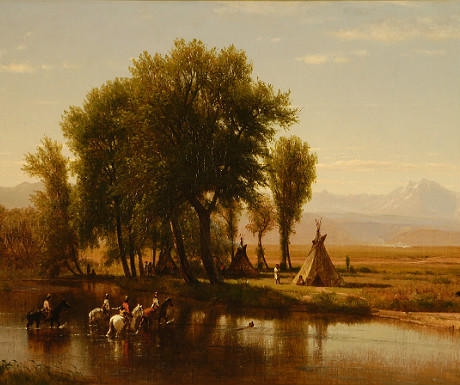
A wonder to behold this magnificent 3000 pound musical contraption was designed to imitate the sound of an orchestra. It reads rolls of music similarly to a player piano and in the late 19th status symbol amongst the elite. The orchestrion at Clayton is one of the few remaining operational machines in the world.
2. The Grand Concourse Restaurant
Although the three rivers in Pittsburgh were vital for transportation in the region so too were the railroads. In a former passenger terminal for the P&LE Railroad visitors can now enjoy an elegant meal in the painstakingly restored Grand Concourse Restaurant. The terminal, dating from 1901, features a stunning interior with the original carved staircase, columns, light fixtures, wooden booths and tile floors. But the truly jaw dropping feature is the spectacular stained glassed ceiling. During the restoration project more than thirty years ago, workers found the glass ceiling completely black most likely a remnant of air raid precautions taken during WWII. But as the cleaning began, the beautiful glass was revealed. It took over 600 cans of oven cleaner to reveal its former glory.
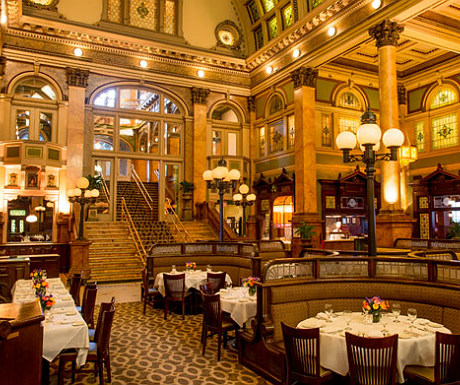
The main room was once for men only as they waited for their train. In a smaller side room visitors can still see the Ladies Waiting Room sign where the women and children had to remain. Now the restaurant is a popular Sunday brunch destination with seemingly endless stations of delectable food spread across the former terminal. The restaurants location near the Station Square shopping complex puts visitors in close proximity to Pittsburghs two remaining funiculars: the Monongahela Incline and the Duquesne Incline. After enjoying a delicious brunch, one can relax on a ride up to the top of Mt Washington to enjoy some breathtaking views of the city.
3. Phipps Conservatory and Botanical Gardens
In 1893 steel and real estate tycoon Henry Phipps presented the city of Pittsburgh with an incredible gift: the Phipps Conservatory. With remarkable foresight, Mr. Phipps created the conservatory and gardens as a way to educate and enlighten the public about various exotic plants and flowers from all over the world. The grounds feature 14 indoor gardens and 6 outdoor gardens including various ones devoted to orchids, tropical plants and even local woodland fauna. Visitors can also enjoy a wonderful collection of Chihuly art glass pieces.
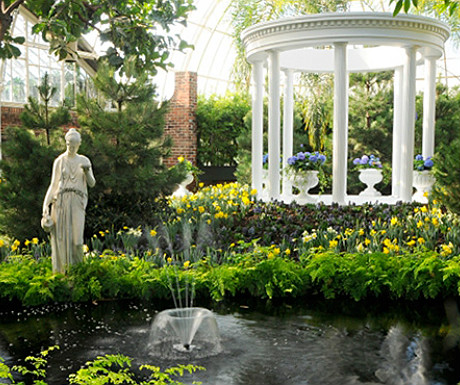
More recently the Phipps has been recognized as one of the greenest facilities in the world. With an eye on the future while respecting the past the integrity of the original 19th century designed glasshouse conservatory was maintained while constructing a new LEED Silver certified Welcome Center in 2005. The Conservatory has received numerous awards for its efforts to promote sustainability and environmental awareness. In recognition for its remarkable efforts and success – the Phipps hosted the welcome dinner for visiting dignitaries during the 2009 G-20 Summit.
4. The Fairmont Pittsburgh
One of the newest properties from the Fairmont brand of hotels the Fairmont Pittsburgh opened in the spring of 2010. During construction of the hotel over 26,000 pieces of artifacts dating from the 18th and 19th centuries were discovered. Many of these pieces, including gold vases and tortoiseshell combs, have been painstakingly restored and are now proudly displayed in both the hotel lobby as well as selected guest rooms. The buildings design used locally sourced materials whenever possible and has been awarded LEED certification. These green initiatives are prevalent throughout the hotel. For example the guest rooms do not offer water in plastic bottles.
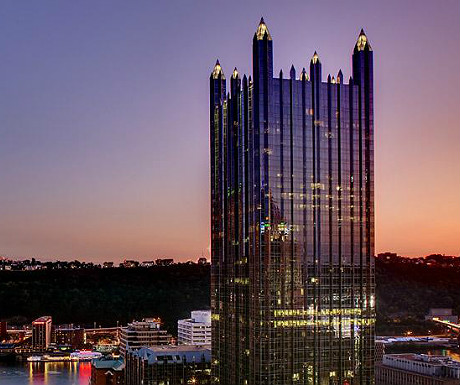
Rather guests will find refillable glass water bottles and filtered water dispensers on each floor. The Fairmont is the only hotel in the city with floor to ceiling windows and some higher level rooms even offer complimentary binoculars for incredible views of the city. But perhaps the best part of any stay at the Fairmont Pittsburgh would be a visit with the hotels Canine Ambassador, Edie. Named after former Warhol muse Edie Sedgwick, Edie is a rescue dog that had trained to become a therapy dog but was deemed too friendly. She now resides on a plush doggy bed in the hotel lobby and is happy to receive love and affection from guests. Shes also available for walks!
5. Wigle Whiskey
During the Presidency of George Washington in the 1790s, a band of rebels in Western Pennsylvania took up arms against the government to protest a tax on whiskey thus sparking the Whiskey Rebellion. The Pittsburgh region was a leading producer of whiskey with several thousand documented stills at one time. This whiskey making tradition returned to Pittsburgh in 2012 with the opening of Wigle Whiskey the first distillery to open in Pittsburgh since Prohibition. Located in the famous Strip District neighborhood, Wigle is owned and operated by the Meyer family.
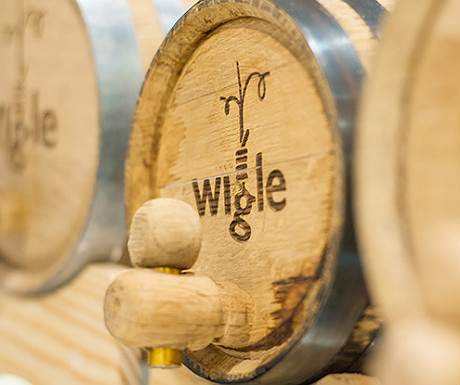
Named after Whiskey Rebellion hero Philip Wigle, the distillery produces their own organic blends of whiskey from scratch using locally sourced ingredients and copper pots much as they did in the 18th cocktail and include a walk through of the distillery process combined with century. Public tours of the facility start with a delicious an entertaining retelling of the Whiskey Rebellion through the eyes of Philip Wigle. Visitors not interested in a tour are also welcome to stop by the sleek modern space for a sample during Tasting Hours. All Wigle products are available for purchase including barrel aging kits so you can do your whiskey aging at home.